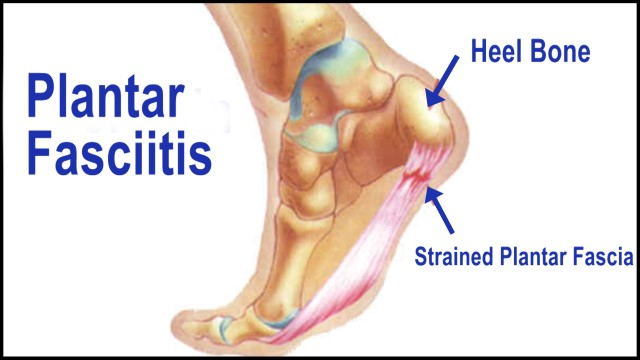When I was completing my physical therapy education way back in 1990, I developed a terrible case of plantar fasciitis while on my final clinical rotation. Fortunately for me, I was surrounded by excellent clinicians who quickly diagnosed the problem and told me exactly what I needed to do to fix things and I was able to resolve matters in a few weeks.
Plantar Fasciitis (PF) is one of the most common causes of heel pain and is a very painful condition of the feet that typically presents as sharp, knife-like pains in the bottom of your foot, usually involving your heel and sometimes your arch. Every step you take can be quite painful – especially first thing upon arising from bed or after extended periods of static standing or inactivity — and it’s a real nuisance. The condition is caused by either a shortening of the plantar fascia in your foot or repetitive stress that causes tears and inflammation in the plantar fascia. Avid joggers often experience PF, as do folks who are overweight and sedentary. PF is also a very common “weekend warrior” injury, wherein folks who haven’t been training consistently irritate their plantar fascia after engaging in more explosive activities their bodies aren’t quite ready for (e.g., jumping activities, plyometric exercises or that game of flag football you and your buddies play every year at Thanksgiving!) If you like to walk barefoot a lot, you are at higher risk as well — especially if you have flat arches to begin with.
Don’t ignore the signs of PF as they can develop into chronic foot pain syndromes as well as cause you to walk differently, which may cause additional problems for your feet, ankles, knees, hips and back.
The plantar fascia in our feet is essentially connective tissue that, under normal, healthy circumstances, poses no problems and serves importantly as shock absorbing supportive tissue and weightbearing support in your feet. It runs from your heel to your toes on the bottom surfaces of these bones and their respective joints. Diagnosis of PF is pretty straightforward and usually does not require expensive diagnostic studies like Xrays, etc. Your doctor or your physical therapist will typically be able to identify the problem for you and physical therapy is a great idea for getting you back on track.
Treatment usually involves a combination of temporary rest to allow the inflamed tissue to quiet down, along with daily stretching exercises and activities oriented to loosening up the plantar fascia (e.g., rolling the sole of your foot over a massage ball or using a kneading style foot massager on the bottom of your foot). Using ice really helps, as does cautious use of anti-inflammatory drugs like Aleve, Advil or Motrin, etc. You’ll eventually need to incorporate some healthy-foot-promoting stretching and strengthening exercises into your routine to minimize the risk of PF from developing again but you’ll be happy to know that PF is easily corrected if you commit to doing what you need to do.



Should you be bothered by plantar fasciitis, ask your doctor for help and consider physical therapy to effectively and efficiently address the problem. You’ll be back on your feet before you know it!

